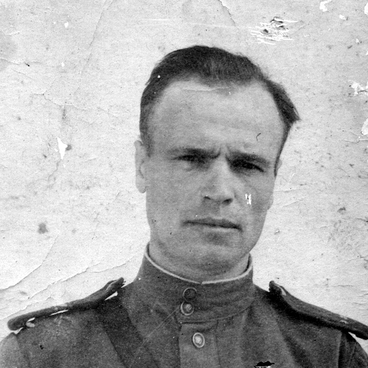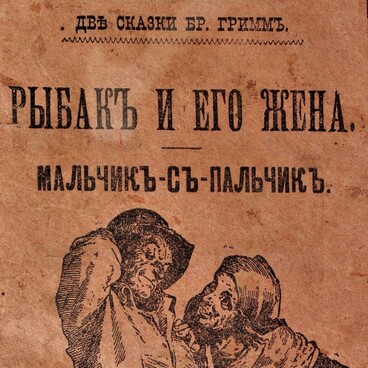The collection of Shebekino History and Art Museum contains the issue of the district newspaper “Plamya” [“Flame”] dated June 21, 1941, which was published on the last peaceful day before the Great Patriotic War. Just in a few hours, the life of Soviet citizens drastically changed: the newspapers and radio began to broadcast status reports from the battlefield, tell about combat losses and successes of the Soviet army.
The newspaper “Plamya” publishing started on February 23, 1930, by the decision of the Central Committee of the All-Union Communist Party (Bolsheviks). Ivan Martynov, chief editor and a journalist from the “Literary Encyclopedia” publishing house, was sent from Moscow to Shebekino. A press operator and a typesetter came together with him to the town.
A small editorial office was located in the basement of Nikolay Rebinder former estate. One room was occupied by an editor, a composing rack with text capture cases, and a printing press “bostonka” were placed in the other room, this was the very place where the typography was located. Originally, “Plamya” was a small publication in two pages, about the size of a sheet of paper. It was issued three times a week with 500 copies circulation.
By May 1930, the Moscow specialists organized the newspaper issuance and departed. The local workers took their places: a new editor Alexander Sinitsyn from Kursk and three typesetters from Belgorod. At the same time, the personnel was increased and new machinery appeared. The publishing of the newspaper “Plamya” began in a large format.
On the cusp of the war, Alexander Kapralsky was the newspaper editor-in-chief, and Ivan Kkotiev was the executive secretary. In 1940, the Shebekino district newspaper “Plamya” became a participant of the All-Union Agricultural Exhibition — “for active assistance to the farm workers, organization of the socialist competition, and promotion of best practices.” At that time, its circulation was 35 thousand copies. In August 1941, Alexander Kapralsky signed the last issue — all journalists and typographers went off to war.
After the liberation of the town of Shebekino from the Nazi occupation in 1943,"Plamya” was sent to the printing again. With the slogan “Everything for the front, everything for victory over the enemy!” the newspaper had called Shebekino residents to a hard fight against the enemy.
At the end of the 1950s, the newspaper’s editorial office moved to an ancient building at Moskovskaya Street, the former shop of the merchant Fedor Zolotarev, a historical monument of the early 20th century. The newspaper still exists, and for 90 years has been covering Shebekino district life, highlighting everyday working life and problems of the inhabitants, culture, sports events, achievements, and famous fellow citizens as well.
The newspaper “Plamya” publishing started on February 23, 1930, by the decision of the Central Committee of the All-Union Communist Party (Bolsheviks). Ivan Martynov, chief editor and a journalist from the “Literary Encyclopedia” publishing house, was sent from Moscow to Shebekino. A press operator and a typesetter came together with him to the town.
A small editorial office was located in the basement of Nikolay Rebinder former estate. One room was occupied by an editor, a composing rack with text capture cases, and a printing press “bostonka” were placed in the other room, this was the very place where the typography was located. Originally, “Plamya” was a small publication in two pages, about the size of a sheet of paper. It was issued three times a week with 500 copies circulation.
By May 1930, the Moscow specialists organized the newspaper issuance and departed. The local workers took their places: a new editor Alexander Sinitsyn from Kursk and three typesetters from Belgorod. At the same time, the personnel was increased and new machinery appeared. The publishing of the newspaper “Plamya” began in a large format.
On the cusp of the war, Alexander Kapralsky was the newspaper editor-in-chief, and Ivan Kkotiev was the executive secretary. In 1940, the Shebekino district newspaper “Plamya” became a participant of the All-Union Agricultural Exhibition — “for active assistance to the farm workers, organization of the socialist competition, and promotion of best practices.” At that time, its circulation was 35 thousand copies. In August 1941, Alexander Kapralsky signed the last issue — all journalists and typographers went off to war.
After the liberation of the town of Shebekino from the Nazi occupation in 1943,"Plamya” was sent to the printing again. With the slogan “Everything for the front, everything for victory over the enemy!” the newspaper had called Shebekino residents to a hard fight against the enemy.
At the end of the 1950s, the newspaper’s editorial office moved to an ancient building at Moskovskaya Street, the former shop of the merchant Fedor Zolotarev, a historical monument of the early 20th century. The newspaper still exists, and for 90 years has been covering Shebekino district life, highlighting everyday working life and problems of the inhabitants, culture, sports events, achievements, and famous fellow citizens as well.



